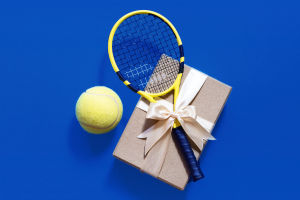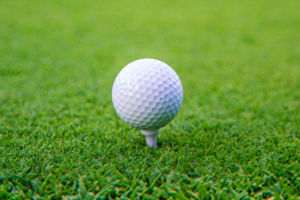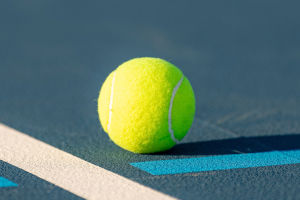Tennis may be all about skill, agility, and strategy, but let’s not forget the tiny, fuzzy sphere that makes it all possible: the tennis ball. This small, vibrant object is at the heart of every tennis match, practice session, and friendly game.
But have you ever wondered what makes a tennis ball so special?
From its construction to its impact on gameplay, the tennis ball is much more than just a simple piece of equipment.
What Makes a Tennis Ball Unique?
Designed for Performance:
A tennis ball isn’t just any ball; it’s carefully designed to meet the exact standards of the sport. Made of a rubber core and covered with felt, it’s engineered to ensure consistent bounce, durability, and visibility. The felt surface is crucial—it creates drag, affecting how the ball moves through the air, and contributes to the spin and control experienced during play.
Pressurized or Pressureless:
Not all tennis balls are created equal. There are two main types: pressurized and pressureless. Pressurized balls are filled with air, giving them their characteristic bounce. However, they lose air over time and eventually need to be replaced. Pressureless balls, on the other hand, rely on their thicker rubber construction to maintain bounce. They last longer and are great for practice, but they don’t offer the same lively feel as pressurized balls.
The Evolution of the Tennis Ball
From Leather to Felt:
The history of the tennis ball is quite fascinating! Early tennis balls were made from leather stuffed with wool or horsehair. As the sport evolved, so did the ball. By the 19th century, rubber balls covered in flannel were introduced, providing a more standardized bounce and feel. Today’s tennis balls are highly sophisticated, designed to enhance every aspect of the game.
Colors and Visibility:
Ever wondered why tennis balls are bright yellow? The color wasn’t always this way. Before the 1970s, tennis balls were typically white. However, television broadcasts revealed that a yellow ball was far easier to see against the court background, especially for viewers at home. Thus, the International Tennis Federation (ITF) standardized the neon yellow color that we associate with tennis balls today.
How to Choose the Right Tennis Ball
Skill Level Matters:
Your choice of tennis ball should depend on your skill level. For beginners, softer balls like red, orange, or green transition balls are ideal. They move slower and are easier to control, making it simpler to learn the basics. For intermediate and advanced players, regular-duty or extra-duty felt balls offer the right balance of speed, bounce, and durability.
Court Surface Considerations:
Not all tennis balls perform the same on every court surface. Regular-duty balls are designed for clay or indoor courts, where the surface is softer and less abrasive. Extra-duty balls are ideal for hard courts, as they’re made to withstand the rougher surface without wearing out too quickly.
The Lifespan of a Tennis Ball
How Long Do They Last?
Tennis balls don't last forever, and their lifespan largely depends on the frequency of use and the type of play. In professional tournaments, balls are replaced every 7 to 9 games to ensure consistent performance. For casual players, a can of pressurized tennis balls may last several sessions, while pressureless balls can remain in play for months or even years.
Signs It’s Time for a Change:
If your tennis ball feels flat, doesn’t bounce as high, or the felt is wearing off, it’s probably time for a new one. Playing with an old or worn-out ball can impact your game, reducing the quality of your shots and making it harder to control the ball.
Where to Buy Tennis Balls
Sports Stores and Online:
You can find tennis balls at most sports stores, ranging from around $3 to $6 for a can of three pressurized balls. Brands like Wilson, Penn, and Dunlop are popular choices. For a more extensive selection, check out online retailers , where you can find bulk deals and specialized balls for different court surfaces or player levels.
Whether you’re a seasoned player or just getting started, the tennis ball is your constant companion on the court. Its unique design, vibrant color, and careful construction make it an essential element of the sport.Lykkers, So next time you grab your racquet, remember that the humble tennis ball is packed with history, science, and a touch of magic to keep your game in top form!


